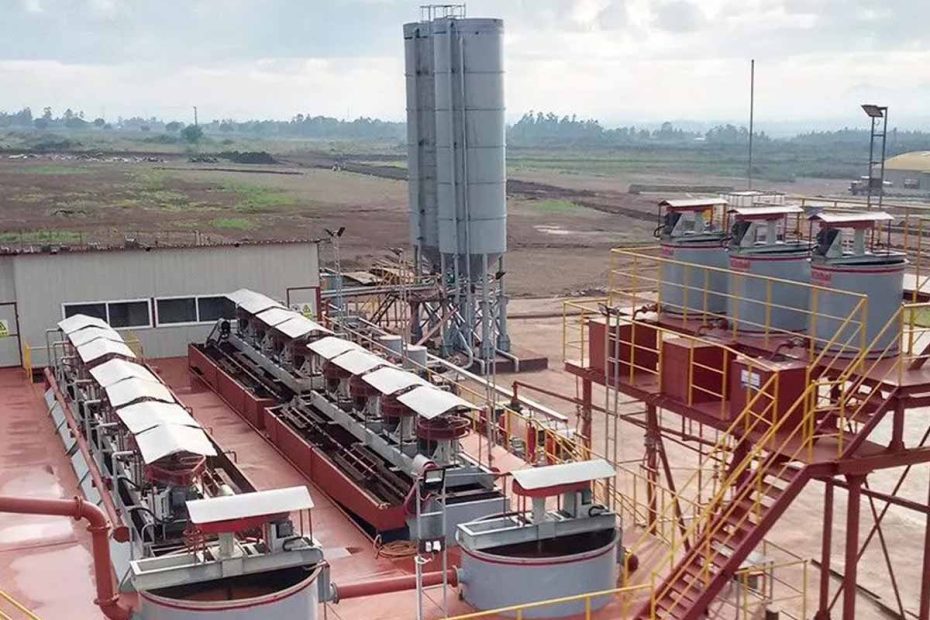Judging whether the lead-zinc ore Mineral processing effect is qualified usually needs to be based on a series of technical indicators and standards, which reflect the efficiency and economy of the mineral processing . The standards for evaluating the quality of lead-zinc ore Mineral processing usually involve many aspects, including but not limited to grade, Mineral processing recovery rate, Mineral processing technology and other key indicators.
Taste
Grade is the basic indicator to measure the effect of mineral processing. The grade standard for judging the quality of lead-zinc ore processing mainly includes three aspects: ore grade, concentrate grade and tailings grade.
- Ore grade: This is a direct indicator of the quality of lead-zinc ore, usually expressed as a percentage of lead and zinc content. Cut-off grade and minimum industrial grade are important criteria for determining whether an ore is valuable for mining.
- Concentrate grade: The percentage of lead and zinc in the concentrate, which is another important indicator of the effectiveness of the mineral processing process. The higher the grade of the concentrate, the higher the purity of the useful minerals separated during the Mineral processing. According to the specific conditions of the mineral deposit and market demand, the concentrate grade should reach certain standards. For example, if the grade of lead-zinc concentrate is higher than industry standards or contract requirements, then the Mineral processing effect can be considered qualified.
- Tailings grade: The percentage of lead and zinc content in the tailings. The lower the tailings grade, the less useful minerals are lost during the mineral processing process.
Ore dressing recovery rate
The mineral processing recovery rate is one of the core indicators for evaluating the mineral processing effect. It measures the rate at which valuable minerals in raw ore are successfully extracted into concentrate. A high recovery rate not only means more lead and zinc are extracted, but also means rational utilization of resources. In the mineral processing design stage, a target recovery rate is usually set, and the achievement of the actual recovery rate is the key to evaluating the mineral processing effect.
Mineral processing technology
Technological progress in the mineral processing process is also an important aspect in evaluating the mineral processing effect. With the development of science and technology, new mineral processing technologies and equipment are constantly emerging, which can improve mineral processing efficiency, reduce costs, and reduce the impact on the environment. For example, the application of flotation technology, magnetic separation technology, gravity separation technology, etc. in lead-zinc ore Mineral processing has significantly improved the Mineral processing effect. ,

Other factors
In addition to grade and recovery rate, there are other factors that also affect the evaluation of mineral processing effects.
- Environmental impact: In the mineral processing process, the impact on the environment is also an important evaluation criterion, including the treatment of waste water, waste gas and solid waste, as well as the protection of the ecological environment.
- Energy consumption and cost: Energy consumption and production costs during the mineral processing process are also important aspects to evaluate the quality of mineral processing. High-efficiency and energy-saving mineral processing technology can improve the overall economic benefits.
- Cleaner production and sustainable development: Following the principles of cleaner production, achieving efficient utilization of resources and sustainable development of the environment is an important development direction of the modern mineral processing industry.
Conclusion
In actual operation, the evaluation of lead-zinc ore Mineral processing effect also needs to consider the complexity of the ore, the size of the deposit, market demand and other factors. By comprehensively analyzing these factors, we can more accurately judge whether the mineral processing effect reaches the expected goal. In short, the evaluation of the Mineral processing effect of lead-zinc ore is a multi-dimensional and dynamic process, which requires continuous optimization of the Mineral processing process, improvement of resource utilization, and ensuring the sustainable development of the environment.
